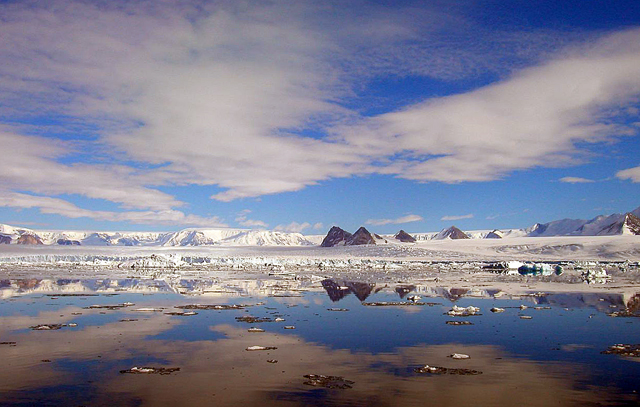|
New scientific modeLARISSA represents one of the biggest IPY projectsPosted September 18, 2009
Ellen Mosley-Thompson “This is the biggest project that I’ve worked on. I’ve never worked on anything of this magnitude,” said Mosley-Thompson, an ice-core and paleoclimate expert and professor at The Ohio State University Her team’s role in the International Polar Year (IPY) Yet drilling the core will be challenging, as it will be among the deepest cores their team has drilled — 400 to 500 meters long to bedrock. The Thompsons expect it to provide a highly detailed story about climate in the region over thousands of years and its possible connections to global events. “The excitement is really going to be bringing our records together with what the other partners will have. We’ve never had that luxury,” Mosley-Thompson said. Indeed, LARISSA brings together more than 30 scientists for one expedition, most of them based aboard the RVIB Nathaniel B. Palmer “Things are flowing into place quite nicely,” said Eugene Domack In addition to the shipboard work, two helicopters will operate off the ship, providing access to the eastern half of the Antarctic Peninsula, as well as the remaining bit of the Larsen B Ice Shelf and the glaciers that flow into it, for glaciological and geological fieldwork. “Big is the word for LARISSA. We’re doing everything under the sun,” said Adam Jenkins, the LARISSA project manager for Raytheon Polar Services Co. “We have an ROV. We’re coring four or five different ways. … Plus, full physical oceanography work. We’re going big with everything,” he said, adding that this is only the second time in more than 15 years of operation that the Palmer will support helicopter flights. It’s Jenkins’ job to ensure all the moving parts of the project chug along smoothly, oiling the machine with as many contingency plans as possible. That task got easier when the NSF decided to support the Thompsons’ drill camp with a Twin Otter airplane from British Antarctic Survey’s Rothera Station “That was a huge deal,” Jenkins noted. Still, even with the ship freed from helping the ice-core team, the scientists know they’ll need ideal conditions to accomplish all the work they want in 60 days. “This is a very complicated program,” said Ted Scambos “To have all of these different disciplines operate simultaneously from the Palmer is a real trick,” he said. “It’s a tribute to Raytheon, Eugene and other leads to organize this and to get it all fit together to be as active as we’re planning to be without getting in each other’s way.” |



For USAP Participants |
For The Public |
For Researchers and EducatorsContact UsU.S. National Science FoundationOffice of Polar Programs Geosciences Directorate 2415 Eisenhower Avenue, Suite W7100 Alexandria, VA 22314 Sign up for the NSF Office of Polar Programs newsletter and events. Feedback Form |



